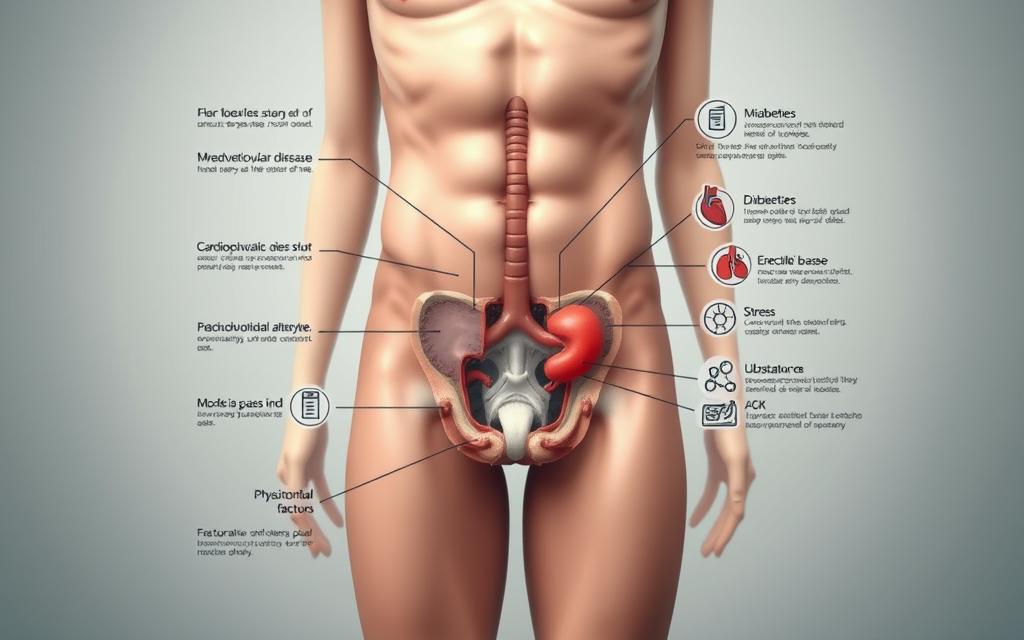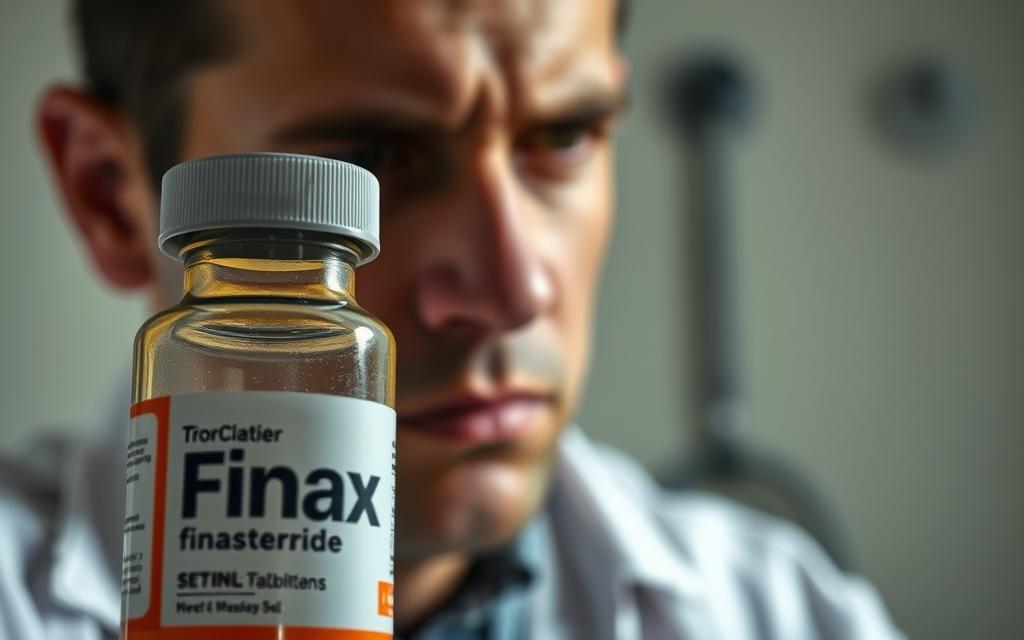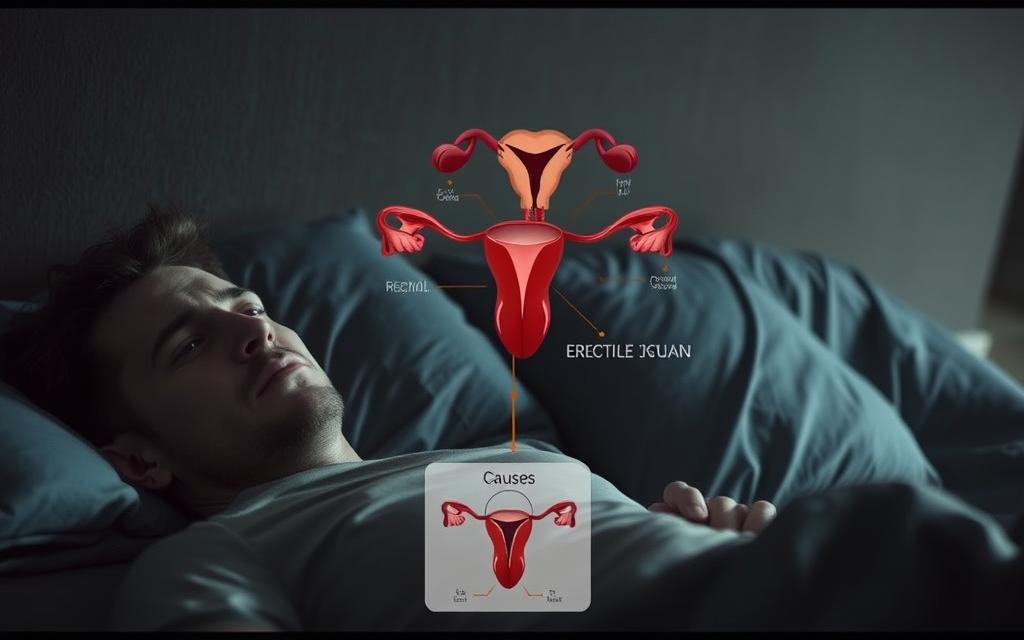Understanding Erectile Dysfunction: Causes, Symptoms, and Treatment Options
Erectile dysfunction (ED) is a condition that affects millions of men worldwide, impacting their quality of life and relationships. It’s a common issue that can stem from various physical and psychological factors.
Recognizing the symptoms of ED is crucial. These can include difficulty achieving or maintaining an erection, reduced sexual desire, and anxiety related to sexual performance.
The causes of ED can be diverse, ranging from underlying health conditions like diabetes and heart disease to lifestyle factors such as smoking and excessive alcohol consumption. Understanding these causes is key to addressing the condition effectively.
This article aims to provide a comprehensive overview of ED, including its causes, symptoms, and available treatment options, helping readers navigate this complex health issue.
What is Erectile Dysfunction?
Understanding erectile dysfunction (ED) requires a look into its definition, prevalence, and the significant impact it has on men’s lives. Erectile dysfunction is a common condition that affects a man’s ability to achieve or maintain an erection sufficient for satisfactory sexual performance.
Definition and Prevalence
Erectile dysfunction is defined as the persistent inability to achieve or maintain an erection. It is a widespread condition that affects millions of men worldwide. Studies indicate that the prevalence of ED increases with age, affecting approximately 40% of men by the age of 40 and nearly 70% by the age of 70.
| Age Group | Prevalence of ED |
|---|---|
| 40-49 years | 40% |
| 50-59 years | 52% |
| 60-69 years | 67% |
Impact on Quality of Life
The impact of erectile dysfunction on a man’s quality of life can be significant, affecting not just sexual relationships but also overall well-being and self-esteem. Men experiencing ED may feel embarrassed or ashamed, leading to emotional distress. For more information on treating ED, you can visit Colorado Urologists for comprehensive treatment options.
Common Causes of Erectile Dysfunction
Erectile dysfunction (ED) is a complex condition with multiple underlying causes that can be broadly categorized into physical and psychological factors.
Physical Causes
Physical health issues are a significant contributor to erectile dysfunction. Various conditions can affect the blood flow, nerve function, and hormonal balance necessary for achieving and maintaining an erection.
Cardiovascular Conditions
Conditions like hypertension and atherosclerosis can damage blood vessels, restricting blood flow to the penis and leading to ED. Maintaining cardiovascular health is crucial in preventing erectile dysfunction.
Hormonal Imbalances
Hormonal imbalances, particularly low testosterone levels, can significantly impact erectile function. Testosterone plays a key role in libido and the ability to achieve an erection.
Medication Side Effects
Certain medications, including some used to treat depression, high blood pressure, and prostate issues (like Finasteride, known by the brand name Finax), can have erectile dysfunction as a side effect.
Psychological Causes
Psychological factors also play a crucial role in the development of erectile dysfunction. Mental health issues can affect a person’s ability to achieve or maintain an erection.
Stress and Anxiety
Stress and anxiety can lead to ED by causing tension and making it difficult to relax enough to achieve an erection. Chronic stress can also lead to fatigue, further exacerbating the issue.
Depression and Relationship Issues
Depression and relationship problems can also contribute to erectile dysfunction. Depression can lower libido, while relationship issues can cause stress and anxiety that impact erectile function.

Recognizing the Symptoms of ED
The symptoms of erectile dysfunction can vary, but recognizing them is essential for men to take the first step towards seeking help. Erectile dysfunction is characterized by the inability to achieve or maintain an erection sufficient for satisfactory sexual performance.
Primary Symptoms
The primary symptom of ED is the consistent difficulty in achieving or maintaining an erection. This can manifest as:
- Inconsistent erections: Sometimes being able to achieve an erection, but not every time.
- Reduced firmness: Achieving an erection but with reduced firmness.
- Loss of erection during sex: Losing the erection before or during sexual intercourse.
When to See a Doctor
If you’re experiencing persistent difficulties with erections, it’s crucial to consult a healthcare professional. Early diagnosis can help identify underlying causes, which may be related to lifestyle factors, underlying health conditions, or psychological factors.
| Symptom Duration | Recommended Action |
|---|---|
| Less than 3 months | Monitor symptoms; consider lifestyle changes. |
| More than 3 months | Consult a healthcare professional for evaluation. |
Does Finax Cause Erectile Dysfunction?
Finax, known generically as Finasteride, is a medication commonly prescribed for male pattern baldness, but its potential impact on erectile function has raised questions. Finasteride works by inhibiting the conversion of testosterone to dihydrotestosterone (DHT), a hormone involved in hair loss.
What is Finax (Finasteride)?
Finax, or Finasteride, is primarily used to treat benign prostatic hyperplasia (BPH) and male pattern hair loss. It functions by reducing DHT levels, thereby slowing down hair loss and potentially promoting hair regrowth. Learn more about the potential link between Finasteride and erectile.

Research on Finax and Sexual Side Effects
Research into the sexual side effects of Finasteride, including erectile dysfunction, has yielded mixed results. Some studies suggest a link between Finasteride and sexual dysfunction, while others find the risk to be minimal. It’s essential to consider these findings in the context of individual health profiles.
Risk Factors and Incidence Rates
The incidence of erectile dysfunction in men taking Finasteride varies. Factors influencing this risk include the duration of treatment, individual health conditions, and concurrent medications. Men with a history of sexual dysfunction may be more susceptible to experiencing ED while on Finasteride.
To mitigate potential risks, it’s crucial for patients to discuss their medical history and any concerns with their healthcare provider before starting Finax. Monitoring for side effects and adjusting treatment plans as needed can help manage the risk of erectile dysfunction.
Diagnosing Erectile Dysfunction
The diagnosis of erectile dysfunction is a multi-step process that requires careful evaluation. It involves understanding the patient’s overall health, identifying potential underlying causes, and selecting appropriate diagnostic tests.
Medical History and Physical Examination
A thorough medical history is crucial in diagnosing erectile dysfunction. It helps identify potential risk factors, such as diabetes, hypertension, or cardiovascular disease, which can contribute to ED. A physical examination may also be conducted to check for signs of underlying conditions.
During the medical history, the healthcare provider will ask questions about the patient’s symptoms, lifestyle, and medication use. This information is vital in determining the potential causes of ED and guiding further diagnostic testing.
Laboratory Tests and Specialized Assessments
Laboratory tests are often used to diagnose underlying conditions that may be contributing to erectile dysfunction. These tests may include blood glucose tests to check for diabetes, lipid profiles to assess cardiovascular risk, and testosterone levels to evaluate hormonal balance.
In some cases, specialized assessments may be necessary to further evaluate the cause of ED. These can include penile plethysmography to measure blood flow to the penis or nocturnal penile tumescence testing to assess erectile function during sleep.
Treatment Options for Erectile Dysfunction
Addressing erectile dysfunction effectively requires understanding the available treatment options, from oral medications to lifestyle changes. Men experiencing ED can explore various pathways to improve their sexual health.
Oral Medications
Oral medications are a common first-line treatment for ED. PDE5 inhibitors, such as sildenafil and tadalafil, are well-known options that help increase blood flow to the penis.
PDE5 Inhibitors
PDE5 inhibitors work by relaxing the muscles in the blood vessel walls, improving erectile function. They are effective for many men but may have side effects.
Other Prescription Options
Other oral medications may be prescribed depending on the underlying cause of ED. It’s essential to consult a healthcare provider to determine the best option.
Other Medical Treatments
For men who do not respond to oral medications, other medical treatments are available. These include injections and suppositories, as well as surgical options.
Injections and Suppositories
Injections, such as alprostadil, are administered directly into the penis to induce an erection. Suppositories are another alternative.
Surgical Options
Surgical treatments, including penile implants, are considered when other treatments fail. These options are typically reserved for severe cases.
Lifestyle Changes
Making lifestyle changes can significantly impact ED. Diet and exercise play a crucial role in improving overall vascular health.
Diet and Exercise
A healthy diet rich in fruits, vegetables, and whole grains, combined with regular physical activity, can enhance erectile function. For more information on boosting testosterone, visit Colorado Urologists.
Stress Management
Stress can exacerbate ED. Practicing stress-reducing techniques, such as meditation or yoga, can help manage stress levels.
| Treatment Option | Description | Benefits |
|---|---|---|
| Oral Medications | PDE5 inhibitors and other prescription drugs | Easy to administer, effective for many men |
| Injections and Suppositories | Direct administration into the penis | Effective for men who don’t respond to oral meds |
| Surgical Options | Penile implants and other surgical interventions | Long-term solution for severe ED |
| Lifestyle Changes | Diet, exercise, stress management | Improves overall health, can enhance erectile function |
Managing ED When Taking Finax
Managing ED while on Finax involves understanding the potential side effects and exploring alternatives. For individuals experiencing erectile dysfunction due to Finasteride, it’s crucial to address this issue comprehensively.
Discussing Side Effects with Your Doctor
Discussing any side effects with your healthcare provider is a critical step. They can offer guidance on managing ED while taking Finax and potentially adjusting your treatment plan. It’s essential to be open about the symptoms you’re experiencing to receive the most appropriate care.
Alternative Treatments for Hair Loss
For those concerned about the side effects of Finax, there are alternative hair loss treatments available. These include:
- Minoxidil (Rogaine)
- Low-Level Laser Therapy (LLLT)
- Hair transplantation
Comparing these alternatives can help individuals make informed decisions. The following table summarizes key aspects:
| Treatment | Efficacy | Side Effects |
|---|---|---|
| Minoxidil | Moderate | Scalp irritation |
| LLLT | Variable | Minimal |
| Hair Transplantation | High | Surgical risks |
By exploring these options and discussing them with a healthcare provider, individuals can better manage ED while taking Finax or consider alternative treatments for hair loss.
Conclusion
Erectile dysfunction is a common condition affecting millions of men worldwide, causing significant distress and impacting quality of life. Understanding the causes, symptoms, and treatment options is crucial for managing ED effectively.
The relationship between Finax, a medication used to treat hair loss, and ED has been a topic of discussion. While some research suggests a potential link between Finasteride and sexual side effects, the incidence rates vary, and individual experiences may differ.
In conclusion, a comprehensive summary of ED highlights the importance of seeking professional advice if symptoms persist. Discussing treatment options with a healthcare provider can help determine the best course of action. For those taking Finax, understanding the potential risks and benefits is essential. By being informed and proactive, individuals can make educated decisions about their health and well-being.
